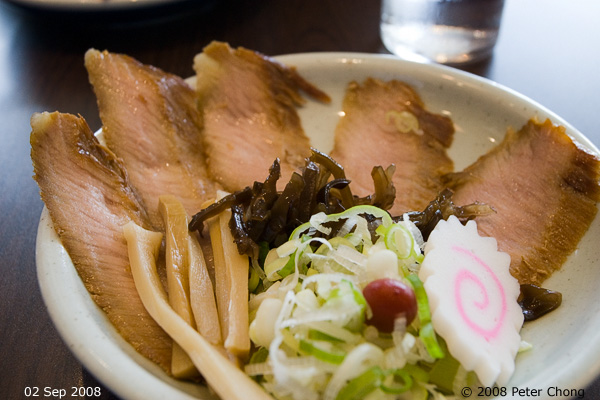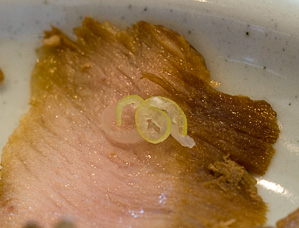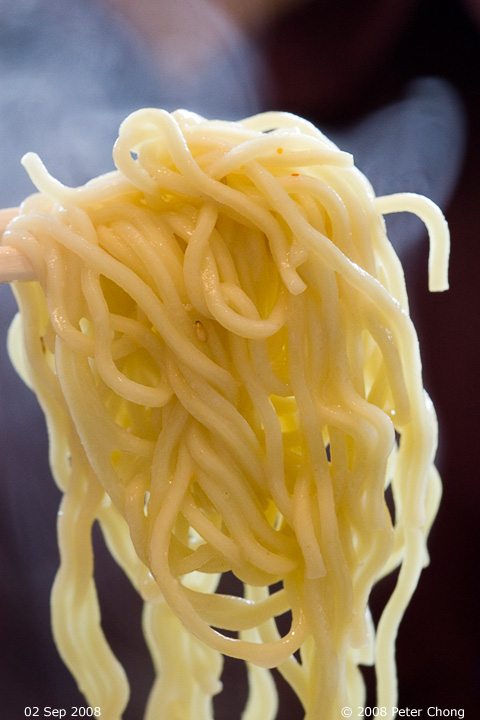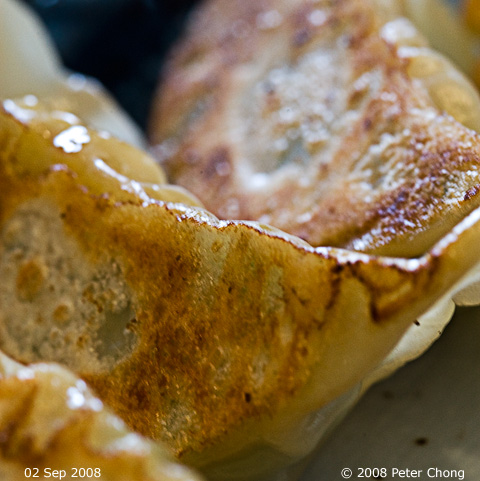Smoked meats are a staple in the beef towns in American states like Texas and interestingly in Montreal. A typical cut used is the brisket...a cut of meat from the breast or lower chest - the pectoral muscles form the bulk of the brisket. In Hong Kong cuisine, the ngau lam is usually coupled with collagen rich tendons to balance the sometimes tough muscle tissue. But a traditional Jewish method, as is practiced by the famous institution of Schwartz in Montreal (I once queued outside the tiny restaurant for about an hour in Montreal winter, minus 20C! to sample this delightful delicacy) is to smoke the marinated brisket over a low hickory fire. The resultant flavour is a smoky, tender slice of muscle which, depending on the degree of marbling of the beef can be very tender and tasty.
Wood Restaurant in Singapore promises the same enticing experience. The restaurant is at one end of the walkway (broadwalk?)in Vivocity, just below the cinemas. As one enters, one is greeted by a hostess at the front desk. The interior looked very dark from the entrance lobby, looked more like an evening entertainment club than a restaurant. As one enters, a long dark corridor leads directly to a beautiful glass cellar showcasing some very interesting wines. Flanking the corridor are private rooms, and this leads to the very bright dining hall...perhaps its just the contrast from the dark corridor, but it was lunchtime, and the sun was streaking in from the full length glass walls as the restaurant faces Sentosa.
We started with a shared plate of Wood signature chicken satay with spicy peanut sauce.
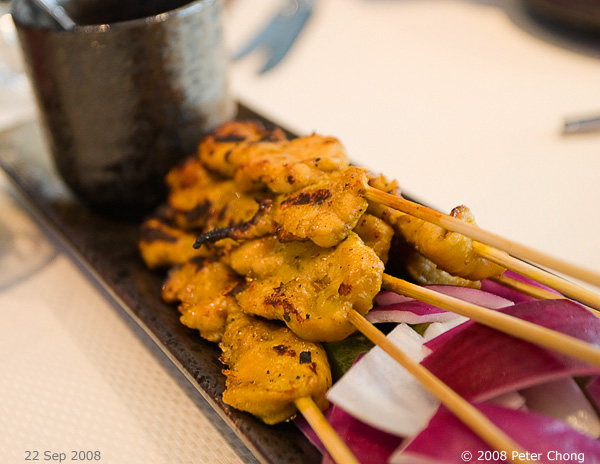
The smell which greeted us as the dish was presented was very woody, smoky. Chicken breast meat was used, and all three of us find it a bit on the dry side. I thought the flavour was quite interesting, but Mycroft demanded more fat...and would have prefered thigh or drumstick with a good helping of skin. He reminisced a yakitori meal we had comprising bishop's nose and grilled chicken skin. This doctor loves his fat.
The mildly spicy sauce was very thick, had plenty of ground crunchy peanuts. Not quite like the super thick sauce they serve on board SIA. But much thicker, and less oily than those found in Kajang.
I had read earlier that the Cardamon coffee 12 hour smoked wagyu brisket is the dish to try. Even the name was enticing. So I ordered that, as did Dr. Mycroft. Jems chose the 2 course set lunch comprising of a Spinach Salad, Chinese Sausage and quail egg in Oriental sauce and the House aged tenderloin with mash and veal jus.
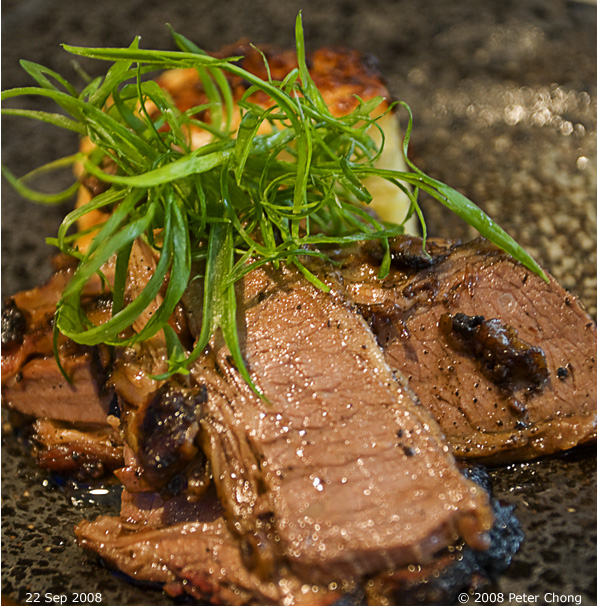
The brisket was quite tender, and had a wonderful smoked flavour. Again Mycroft found the meat a bit dry and was not sufficiently fat. I guess his umami sensors felt unloved. My cut was slightly more marbled and as a result was more tasty. The charred bits hanging on the sides were smoky and full of flavour, but was dry. I am not sure what grade is the wagyu, but the marbling seems to be quite slight. In comparison, Schwartz's smoked brisket was wonderful, melt in your mouth whilst retaining the smoked flavour. Their charred bits were crunchy and as one bits into it, the fat exploded in the mouth, providing great sense of pleasure. But that's half way across the world in Canada.

The salad was very interesting. A concoction of leafy spinach and quail egg in a thin sauce, the chef chose slices of fried Chinese sausages as a topping. The crispy saussage added crunciness, and a beautiful rich flavour and a punch to the mild salad. The dressing was also very mild.
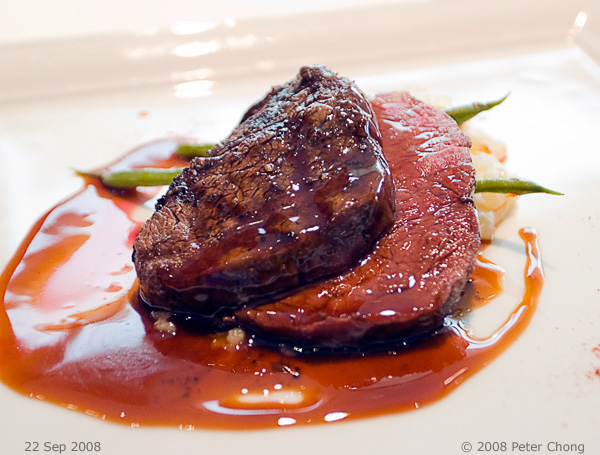
Jems' serving of tenderloin was also very lean. She cut me a small cut to taste, and I found it to be reasonably tender but the lean cut made the meat a bit dry to the palate. I don't normally like jus reduction, so would ask for jus on the side. The red wine reduction technique used will typically result in a thick, sour sauce. Although the two slices of tenderloin was generously covered in jus, it was not sour, but had a mild veal flavour.
Perhaps the cuts of meat was selected for a more health conscious crowd than the 3 of us. We generally felt the meat was too dry, and would have loved more fat.
We then adjourned to Bon Bon Tea one floor up for some dessert. We all tried crepe with ice cream.
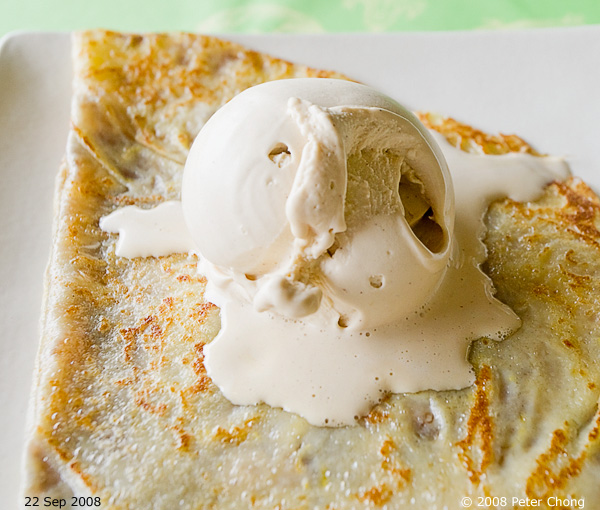
The crepe was not as thin as those typically found on the streets of Paris. It was crispy on the outside and still soft on the inside. Reminds me of roti prata. I had hazelnut chocolate filling (I guess Nutella, also a common filling in Paris) and a huge scoop of hazelnut gelato. Mycroft and Jems both had the Bounty Cream on the side of their crepe, and had Hazelnut and Ameretto ice cream. The ice cream was very rich, slightly on the sweet side, but quite tasty and satisfying. The hazelnut flavour was evident in my scoop. And strong taste and smell of toasted almonds was clear in the Amereto.
Wood Restaurant
1 Harbour Front Walk
#01-53 VivoCity
Singapore 098585
Bonbon Tea
1 Harbour Front Walk
#02-141 VivoCity
Singapore 098585
Photonote: The Wood shots were high ISO - 1600. Though the entire wall was glass, where we sat was rather dark. Our table had a tungsten ceiling lamp shining on the table. This usually wrecks havoc on the white balance. White balance was done with a calibration shot of the white table cloth as white reference using custom white balance. After I took the last photograph, the waitress came by an told me, quite politely, I must say, "Sorry sir, our food is not for photoshoot"...to which I replied, "OK...I am actually planning to eat it." I don't understand why I cannot take photographs of the food I ordered and will pay for, especially when I am not disturbing other guests as I am not using flash, and not shooting them. The Bonbon shot was taken at ISO400.
Disclaimer: I actually went to school with the owner of Wood, but we have lost contact for some 20+ years, and only recently got in touch with each other. He was not in the shop when I visited as he was travelling. The staff did not know me, nor were they expecting me, and I believe had no special treatment.
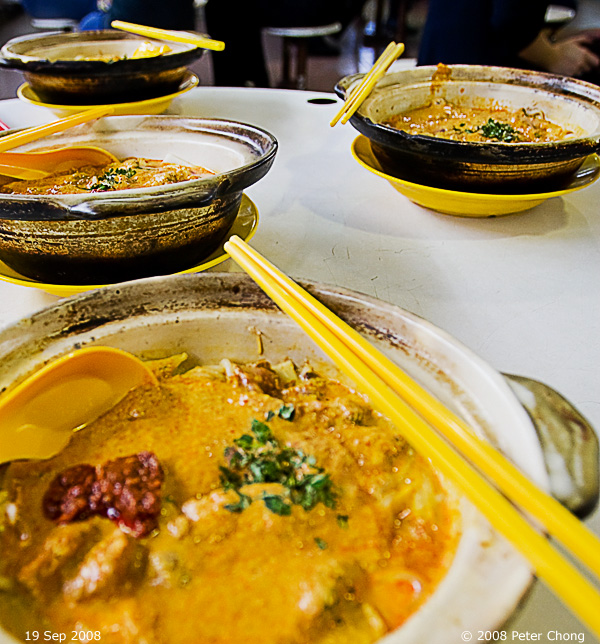
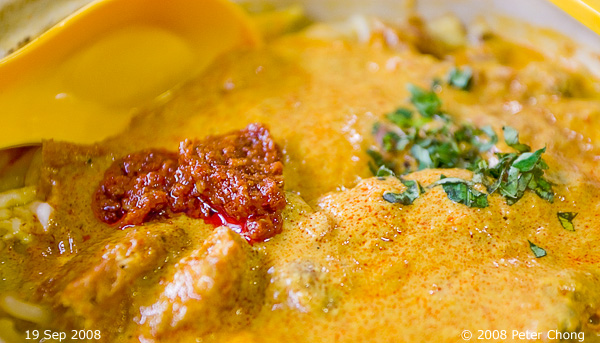
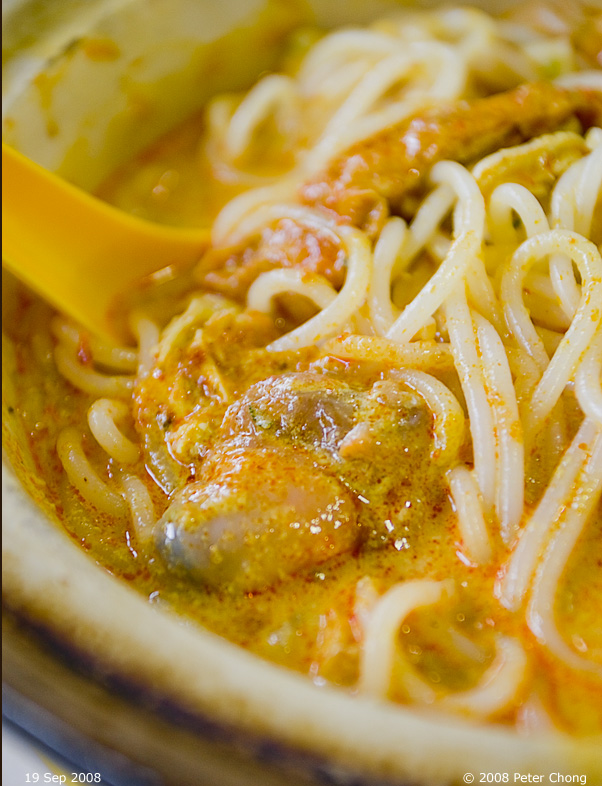

 Zhen Shan Mei Claypot Laksa
Zhen Shan Mei Claypot Laksa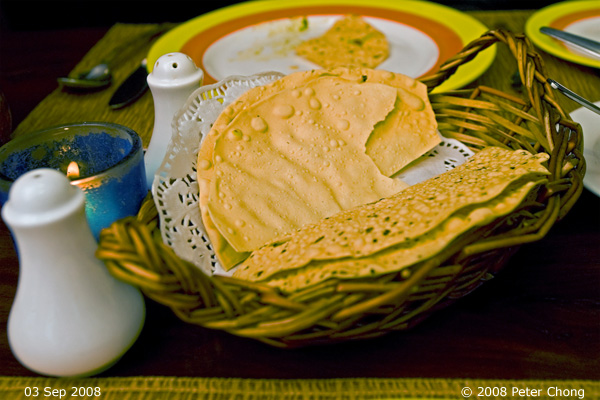
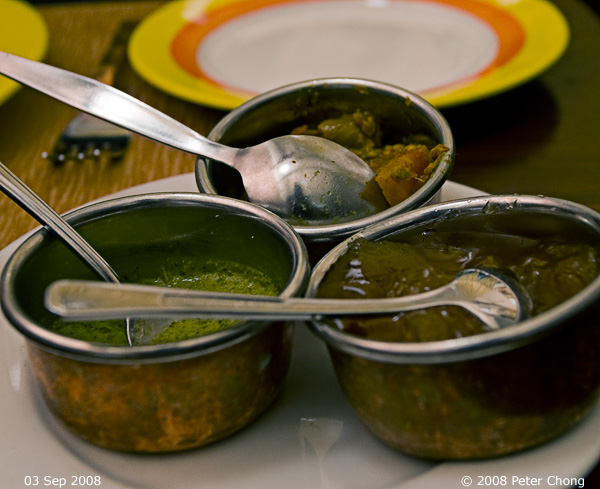
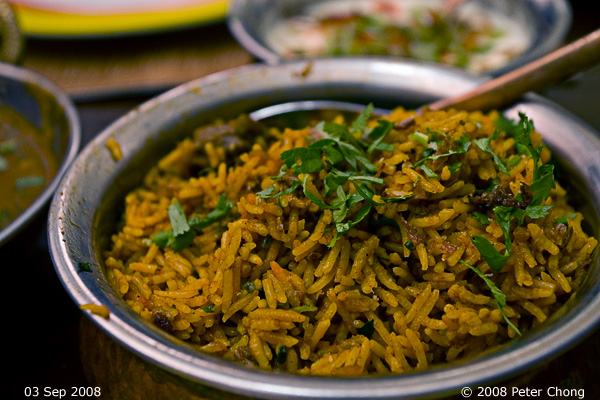


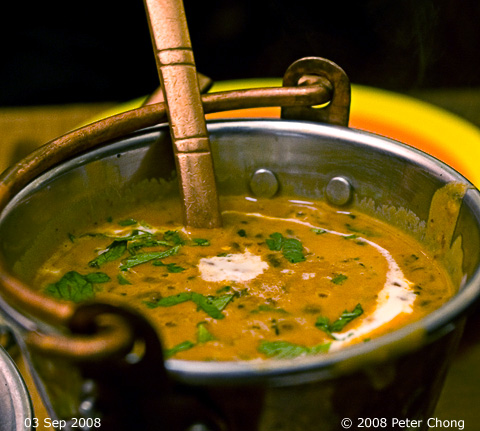
 Mirchi
Mirchi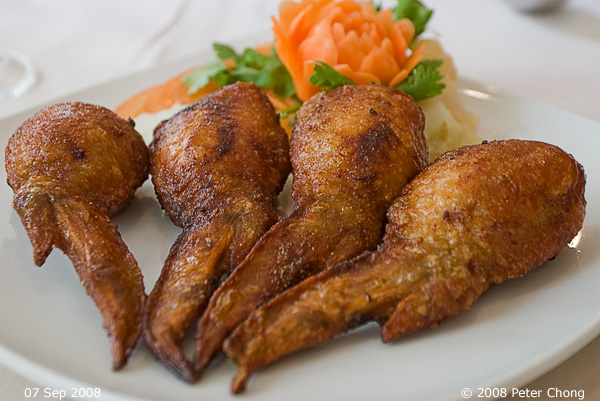

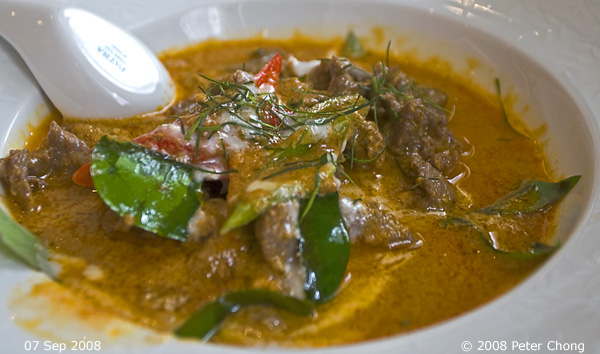
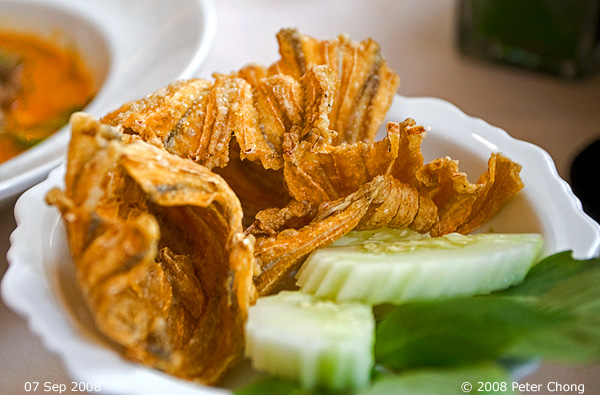




 Overall, definitely one of the better Thai restaurants in Singapore, and certainly one of the more expensive ones...of those I listed above, only Patara is similar in price. Lunch for 4 of us was almost S$130, while a similar meal in Bangkok Jam would probably be no more than S$80.
Overall, definitely one of the better Thai restaurants in Singapore, and certainly one of the more expensive ones...of those I listed above, only Patara is similar in price. Lunch for 4 of us was almost S$130, while a similar meal in Bangkok Jam would probably be no more than S$80.
